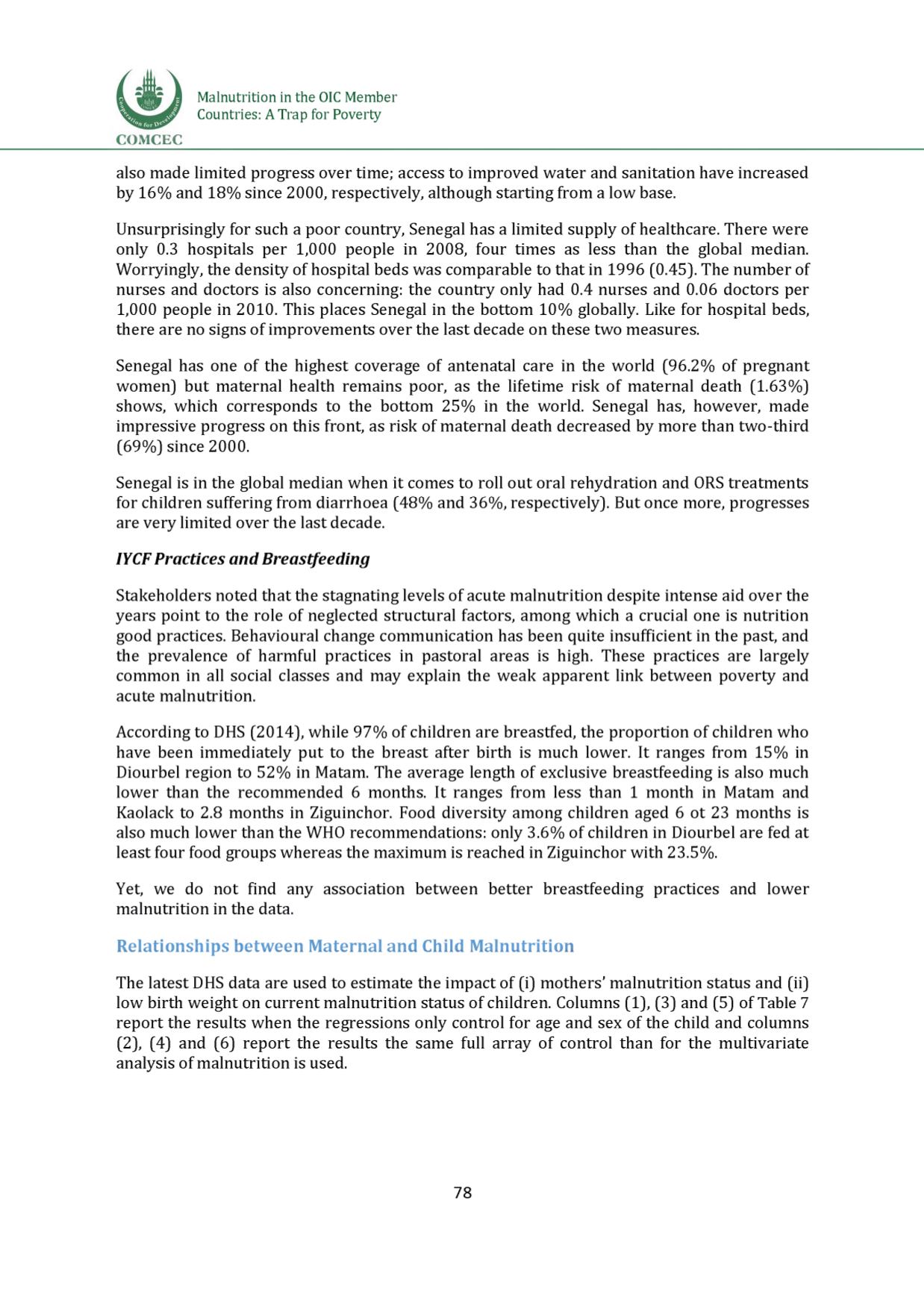

COMCEC
Malnutrition in the OIC Member
Countries: A Trap for Poverty
also made limited progress over time; access to improved water and sanitation have increased
by 16% and 18% since
2 0 0 0
, respectively, although starting from a low base.
Unsurprisingly for such a poor country, Senegal has a limited supply of healthcare. There were
only 0.3 hospitals per 1,000 people in 2008, four times as less than the global median.
Worryingly, the density of hospital beds was comparable to that in 1996 (0.45]. The number of
nurses and doctors is also concerning: the country only had 0.4 nurses and 0.06 doctors per
1,000 people in 2010. This places Senegal in the bottom 10% globally. Like for hospital beds,
there are no signs of improvements over the last decade on these two measures.
Senegal has one of the highest coverage of antenatal care in the world (96.2% of pregnant
women] but maternal health remains poor, as the lifetime risk of maternal death (1.63%]
shows, which corresponds to the bottom 25% in the world. Senegal has, however, made
impressive progress on this front, as risk of maternal death decreased by more than two-third
(69%] since 2000.
Senegal is in the global median when it comes to roll out oral rehydration and ORS treatments
for children suffering from diarrhoea (48% and 36%, respectively]. But once more, progresses
are very limited over the last decade.
IYCFPractices and Breastfeeding
Stakeholders noted that the stagnating levels of acute malnutrition despite intense aid over the
years point to the role of neglected structural factors, among which a crucial one is nutrition
good practices. Behavioural change communication has been quite insufficient in the past, and
the prevalence of harmful practices in pastoral areas is high. These practices are largely
common in all social classes and may explain the weak apparent link between poverty and
acute malnutrition.
According to DHS (2014], while 97% of children are breastfed, the proportion of children who
have been immediately put to the breast after birth is much lower. It ranges from 15% in
Diourbel region to 52% in Matam. The average length of exclusive breastfeeding is also much
lower than the recommended
6
months. It ranges from less than 1 month in Matam and
Kaolack to 2.8 months in Ziguinchor. Food diversity among children aged
6
ot 23 months is
also much lower than the WHO recommendations: only 3.6% of children in Diourbel are fed at
least four food groups whereas the maximum is reached in Ziguinchor with 23.5%.
Yet, we do not find any association between better breastfeeding practices and lower
malnutrition in the data.
Relationships between Maternal and Child Malnutrition
The latest DHS data are used to estimate the impact of (i) mothers' malnutrition status and (ii)
low birth weight on current malnutrition status of children. Columns (1), (3) and (5)
of Table 7report the results when the regressions only control for age and sex of the child and columns
(2), (4) and (
6
) report the results the same full array of control than for the multivariate
analysis of malnutrition is used.
78
















